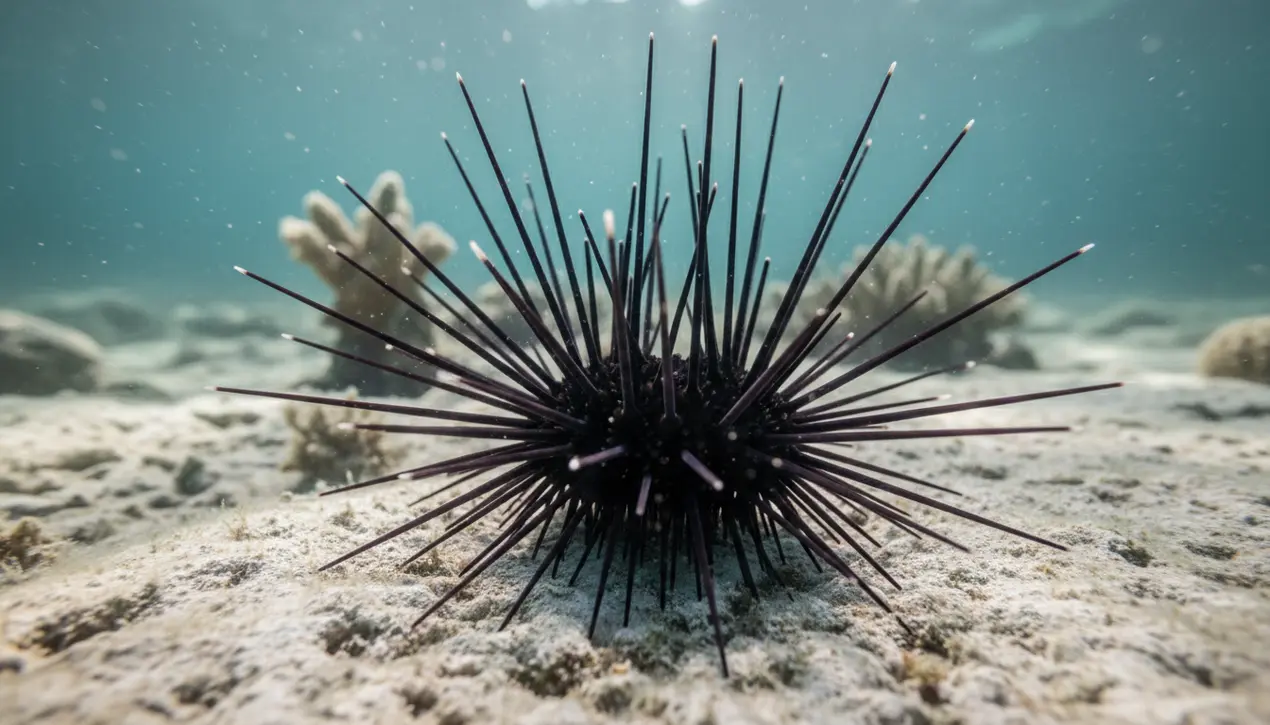
Scienceneuroscience
Sea Urchins Described as Spiky Walking Brains by Scientists
KE
Kevin White
4 hours ago7 min read
The humble sea urchin, long regarded as a simple, spiky denizen of the seabed, has been radically redefined by a groundbreaking scientific revelation: it is, for all intents and purposes, a walking, sensing brain. This isn't a metaphorical comparison but a structural one, with new research suggesting that the creature's entire body acts as a single, distributed neural network.From the very tips of its formidable, mobile spines, which act as both a defensive shield and a sophisticated sensory array, down to its gelatinous core, the sea urchin is a living, breathing cognitive unit. This discovery fundamentally challenges our anthropocentric view of intelligence and neurological organization.Unlike vertebrates, which centralize cognitive function in a distinct organ, the sea urchin exemplifies a decentralized biological strategy, where sensory input and reactive processing are diffused throughout its entire form. This model of embodied cognition offers a profound window into the evolutionary pathways that life can take, suggesting that complex, coordinated behavior does not necessitate a central command center.For scientists in the burgeoning field of bio-inspired robotics and computational models, the sea urchin presents a paradigm shift. Its decentralized nervous system is a masterclass in resilience and efficiency; damage to one area does not cause a systemic failure, a property highly desirable for designing robust autonomous systems or next-generation neural networks.Furthermore, this finding blurs the lines between the animal and plant kingdoms in terms of responsiveness and challenges our very definitions of what it means to 'think. ' The implications extend into future medicine, where understanding such distributed biological processing could inform new approaches to treating neurodegenerative diseases by exploring how function can be maintained or rerouted. The sea urchin, therefore, is far more than a marine curiosity; it is a living prototype, a testament to nature's ingenuity, and a powerful reminder that the future of biotechnology and artificial intelligence may well be found not in isolated processors, but in systems where intelligence is an emergent property of the entire structure itself.
#featured
#sea urchins
#neuroscience
#animal biology
#research
#marine life
#brain evolution
Stay Informed. Act Smarter.
Get weekly highlights, major headlines, and expert insights — then put your knowledge to work in our live prediction markets.
Related News
Comments
Loading comments...
© 2025 Outpoll Service LTD. All rights reserved.